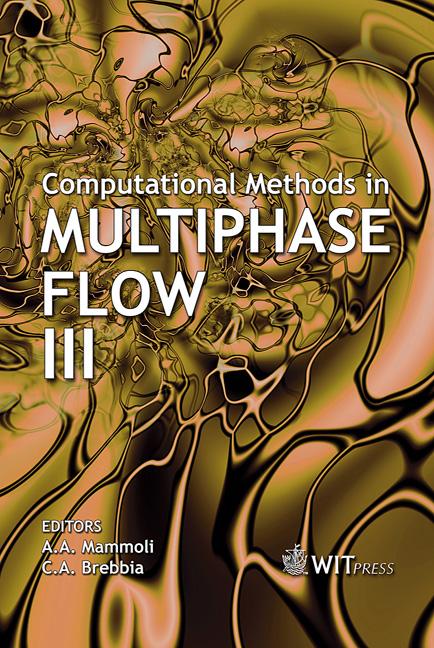The Effect Of Two Inclined Circular Plunging Jets On Air Entrainment In An Aeration Tank
Price
Free (open access)
Transaction
Volume
50
Pages
10
Published
2005
Size
328 kb
Paper DOI
10.2495/MPF050211
Copyright
WIT Press
Author(s)
M. S. Baawain, M. Gamal El-Din & D. W. Smith
Abstract
Air entrainment occurs when two or more flowing fluids plunge into each other, or when some sort of turbulence is introduced in a water body. In this study, experiments were conducted to explore some properties of bubble plumes of two inclined circular plunging water jets on a water surface in a cubic tank utilizing particle image velocimetry (PIV). Different combinations of two inclined water jet sizes operating under different flow rates and plunging angles were used to study air entrainment in the aeration tank. The PIV system was used to measure the two-phase jet velocities in both lateral and axial positions. Other parameters of interest, such as penetration depths and the height and width of the two-phase mixture due to the air entrainment, were monitored using a photographic technique. The gas hold-up ( εG) and the bubble average diameter (db) were consequently obtained. Using εG and db, the specific interfacial area (a) and the overall mass transfer coefficient (kLa) under each operating condition were determined. The obtained results were compared with results obtained under similar operating conditions for vertically aligned jets. Keywords: air entrainment, plunging jets, particle image velocimetry, gas holdup, specific interfacial area, overall mass transfer coefficient. 1 Introduction Liquid plunging jets are moving columns of liquid (water) that pass through some gaseous headspace before impinging into a free surface of the receiving liquid. At the intersection of the plunging jet and the liquid surface, free-surface instabilities develop and gas entrainment may be observed. In order for the gas entrainment to take place, the jet impact velocity has to exceed a characteristic
Keywords
air entrainment, plunging jets, particle image velocimetry, gas holdup, specific interfacial area, overall mass transfer coefficient.





